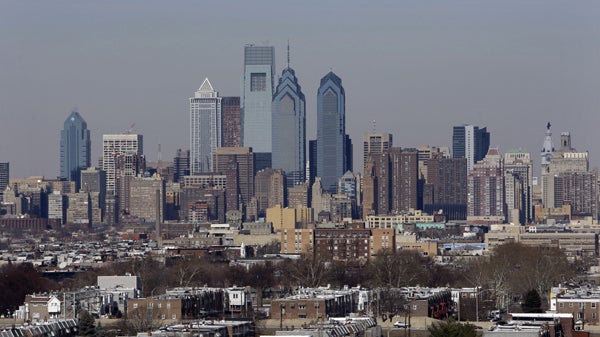Large Philly buildings must report water, energy use starting in October

Large Philly buildings must report water, energy use starting in October (AP Photo, file)
Large commercial buildings in Philadelphia must publicly disclose annual water and energy usage through the city starting in October. The reporting requirement comes on the heels of legislation passed by City Council last summer aimed at increasing transparency and reducing energy usage citywide.
The regulation is called the Building Energy Benchmarking Law and applies to commercial spaces over 50,000 square feet -– which includes hospitals, banks and schools.
Alex Dews, policy and program manager in the Mayor’s Office of Sustainability, says that energy conservation is a money-saving measure despite the complexities of large buildings.
“While we’ve seen some really good progress on municipal and residential energy conservation, the commercial buildings, large buildings, have actually increased energy usage over the time the time period that we’ve been monitoring, since 2006,” Dews said.
More than 2,000 buildings in the city will be required to report, or “benchmark,” their usage. About 60 already have Energy Star certification — meaning they’re in the top 25 percent of buildings for efficiency — including SEPTA headquarters at 1234 Market St.
Companies will input water and energy usage and key features of the building — number of computers, number of employees, typical hours of operation — into a benchmarking tool, which gives them a score.
Dews says the system judges buildings among their peers.
“If you’re a commercial office building that’s 50,000 square feet and built in the 1990s, you’re getting benchmarked against the national database of buildings that are exactly the same as yours,” Dews said. “So you’re not getting compared to the building across the street, which is built last year and three times the size.”
Transparency for consumers
This year the city will release an aggregate report of the data due by Oct. 31. Next year, the deadline shifts to June 30 and the city will post more specific information by building on its website.
Requiring buildings to report this information, the market could drive consumers away from high-energy using buildings, according to Holly Shields, a policy and advocacy coordinator at the Delaware Valley Green Building Council.
“The information will be public and that means all buyers and tenants of commercial buildings or units in commercial buildings over 50,000 square feet will be able to see what the energy usage is for those spaces,” Shields said. “So when you’re comparing renting in one building versus another building, if all the other information is the same, you know, that might be the deciding factor for those tenants.”
How businesses can reduce
Benchmarking can be a sure-fire way to convince building owners to become more efficient in order to avoid public embarrassment, Dews said.
“If you’re at the low end of the scale, there are a lot of simple things you can do that cost nothing that will save a lot of energy and money,” he said. “And if you’re at the high end of the scale, it’s a great way to get some recognition for what you’re doing with your energy performance.”
Solutions for high-energy consuming buildings can range from intensive capital investments to a simple light bulb swap. Other changes can be systematic – such as turning of the air conditioning earlier each evening in offices.
Paul Spiegel, the president of Practical Energy Solutions, said his company currently helps about 35 Philadelphia buildings with benchmarking. Efficiency changes are not one size fits all, he said, noting that hospitals are a particularly difficult place for conservation.
“A lot of the things that are using energy are, you know, pieces of medical equipment that you need to run 24/7,” Spiegel said. “And, in addition to that, they tend to be pretty high intensity energy users because they have a lot of outside air-ventilation requirements to keep the space healthy.”
Different organizations are providing building owners with preparatory training sessions in advance of the reporting deadline. Companies that do not comply will face a fine.
Nationwide expansion
The initiative is one part of the Greenworks Philadelphia sustainability plan, which seeks to make the city the greenest in America by 2015. Final regulations for the law were released in July and the city itself is transitioning to benchmarking all municipal buildings over 10,000 square feet.
Nationwide, 300,000 buildings use the benchmarking tool and seven other cities, including Boston and New York, have passed similar laws.
WHYY is your source for fact-based, in-depth journalism and information. As a nonprofit organization, we rely on financial support from readers like you. Please give today.

